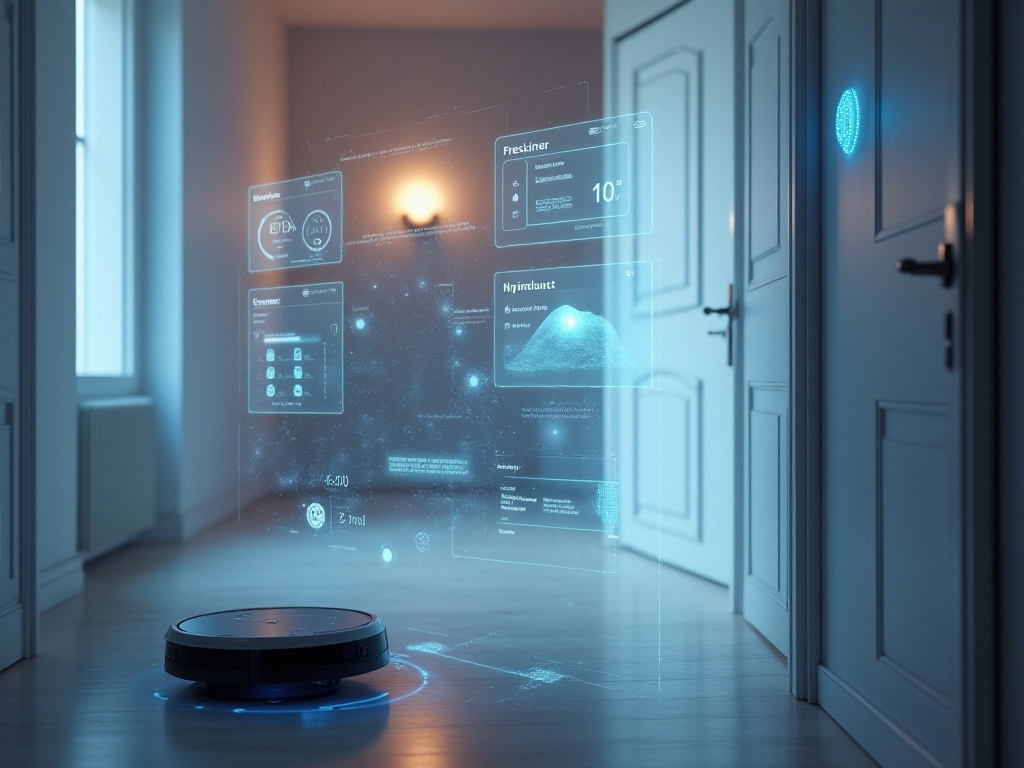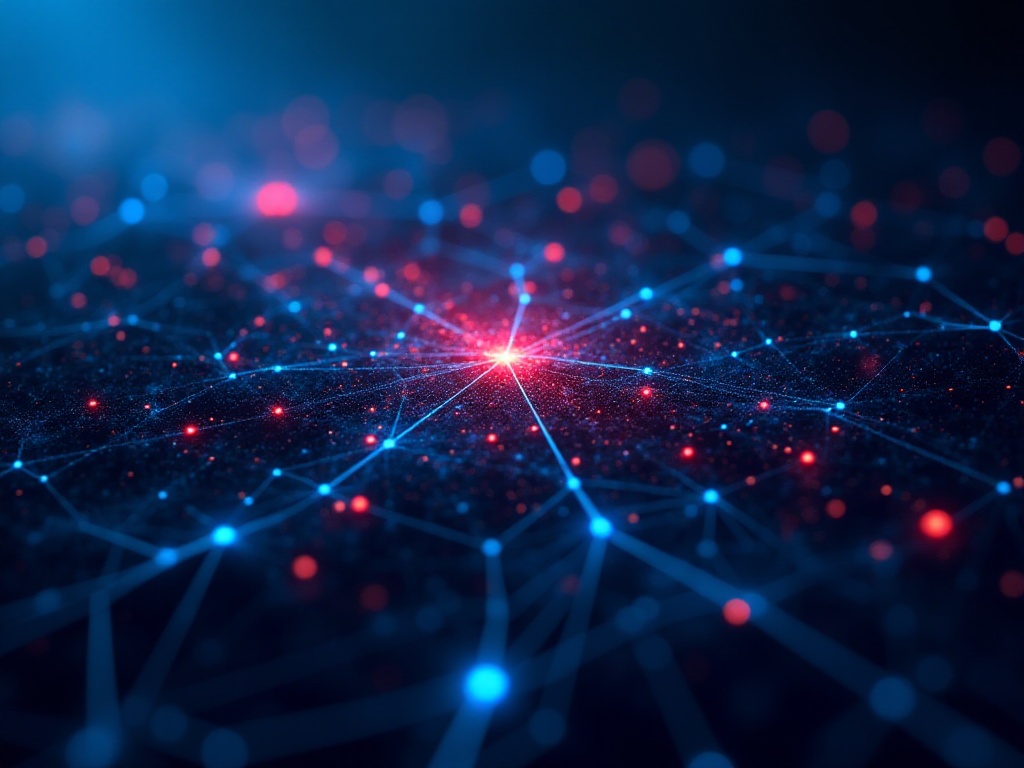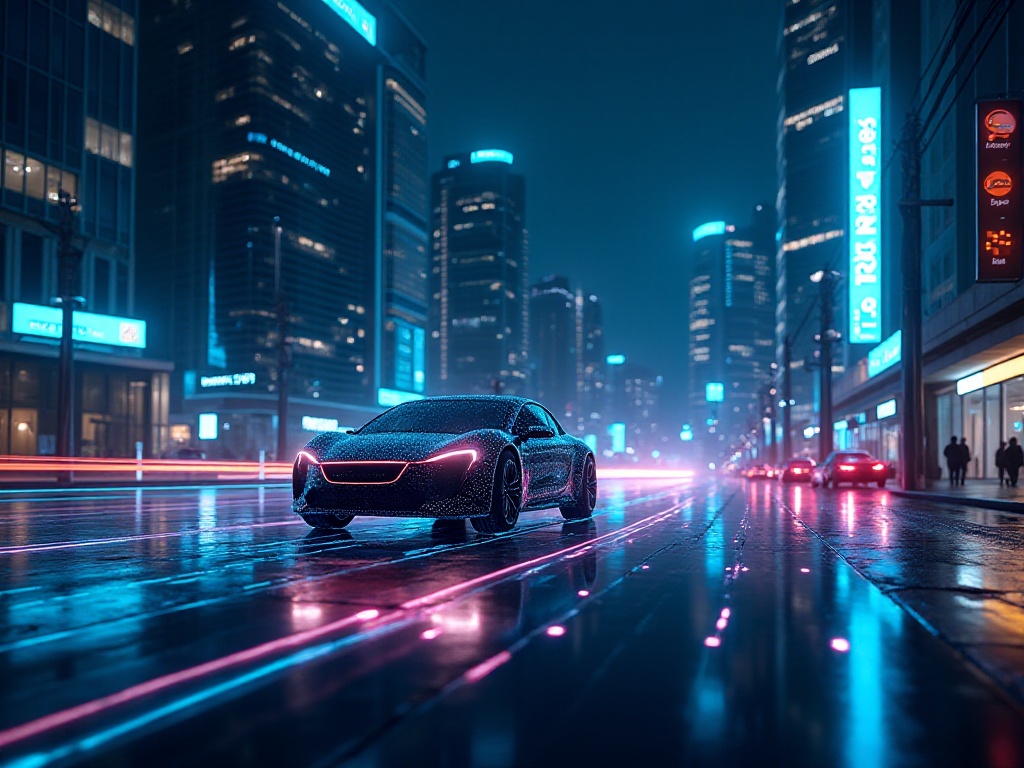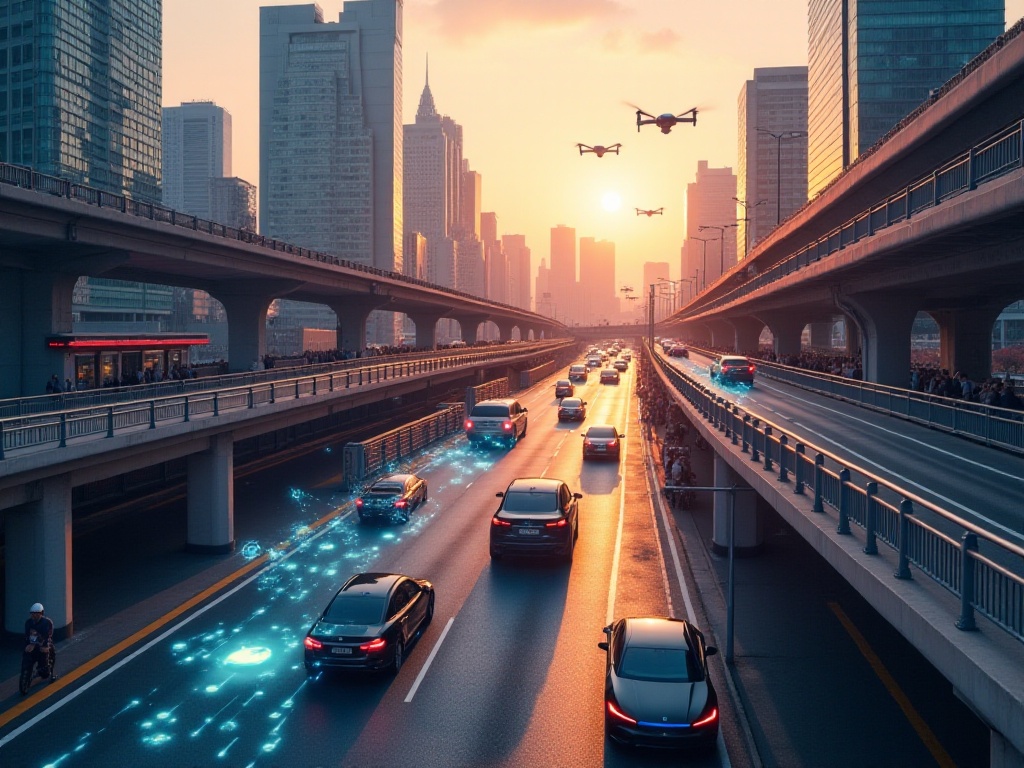My Discovery
Speaking of AI design tools, I've gained quite a bit of insight recently. You know what? Just last month, I was a "design novice" who couldn't even draw a straight line, but now I can create some decent works using AI tools. This transformation has made me realize that AI design tools are quietly changing our understanding and expression of creativity.
When I first started working with AI design, I really lacked confidence. Looking at other people's design works at that time, they always seemed so sophisticated, and I felt I could never reach that level. Every time I opened design software, I would get overwhelmed by the dense toolbar. But since using AI design tools, I discovered that design could be this simple.
I remember being amazed the first time I used AI for design. I was designing a logo for my friend's bubble tea shop, thinking since I was helping for free, I'd see what AI could do. To my surprise, after inputting just a few keywords, AI generated several options that, while not perfect, were quite good as initial drafts. After some simple modifications, the final product even impressed my friend, who praised my talent, which made me really happy.
Since then, I've fallen in love with using AI for design. Every day after work, I play with these tools, trying everything from simple posters to complex brand designs. Though not every piece turns out satisfactory, the whole process is really interesting, like playing a creative game. And as I use it more, I find my understanding of design gradually deepening.
Tool Evolution
Remember when we first encountered design software? Back then, Photoshop was like a mountain to conquer, and just mastering the shortcuts was enough to drive us crazy. But things are different now - AI design tools have made everything simpler.
Speaking of this, I recall my first experience with Photoshop. I specifically bought a thick tutorial book to learn it, but just looking at the table of contents made me dizzy. All those professional terms like layers, masks, filters seemed like hieroglyphics. Not to mention the shortcuts - following the tutorial step by step, I would often forget what I just learned. It made me doubt whether I was really suited for design.
But today's AI design tools are completely different. Take Designs.ai that I've been using recently - it's like having a thoughtful design assistant. You just tell it what style of design you want, and it provides various creative solutions. For instance, a few days ago when I needed to create a promotional poster for a new company product, I just told it: "I want a design that's high-tech but still has warmth," and it actually generated several options, each perfectly matching my expectations.
What amazes me most is that these AI tools can not only understand text descriptions but also generate designs based on reference images. Once when I saw a design style I really liked but couldn't describe, I simply uploaded the image to AI, and it immediately understood my intent, generating designs in a similar style. This experience was truly magical, like having a designer who could read my mind.
Besides Designs.ai, there are many excellent AI design tools in the market now. For example, Canva has a very rich template library and has also added AI features that can automatically generate designs based on your description. There's also Midjourney, which, although primarily used for image generation, has wide applications in design, especially in concept design and artistic creation.
These tools have very user-friendly interfaces, nothing like traditional design software's complexity. Even first-time users can quickly get started. They also provide numerous templates and materials that you can use directly or modify. This greatly lowers the barrier to design, allowing design novices like me to create professional work.
Most importantly, these AI tools keep evolving. They regularly introduce new features, sometimes improving generation quality, sometimes adding new design types. As you use them, you discover that design tasks that once seemed difficult can now be completed in minutes.

Efficiency Improvement
What moves me most about current AI design tools is their efficiency. I remember it used to take several days to complete a simple logo design, from conception to completion. But now using AI tools like Xiaozhi, you can generate dozens of options for selection in just minutes. Of course, this doesn't mean designers will become unemployed; instead, these tools allow designers to focus more on creative thinking and detail optimization.
Speaking of efficiency improvements, I must share a recent experience. Last week, our company needed brand design for a new project, including logo, business cards, brochures, and other materials. Following the previous workflow, such a project would take at least one to two weeks to produce initial drafts. But this time, using AI tools, I completed all initial drafts in just one day.
Specifically, I first used AI to generate several logo options, then had the client choose their favorite style. After determining the main visual style, I used this style to generate other design materials. Since AI tools can maintain design style consistency, the entire brand system looked very coordinated. The final result not only satisfied the client but even impressed our design director, who said this proposal was very professional.
However, honestly, the efficiency improvement brought by AI tools isn't just about speed; more importantly, it makes the entire design process more fluid. Previously when designing, we would often get stuck at certain points, like not being able to come up with good ideas or not knowing how to express our thoughts. But now with AI's help, these problems have become easier to solve.
When I hit a creative block, I can ask AI for some reference solutions to inspire my thinking. And because AI can quickly generate multiple versions, I can try different design directions simultaneously to see which works better. This rapid trial-and-error approach has helped me improve my design skills very quickly.
Another big advantage is that AI tools can help handle tedious technical details. Things like font selection, color matching, element layout, etc. Previously these all relied on experience and intuition, but now AI can automatically adjust them to optimal states based on design principles. This allows me to focus more energy on creative conception rather than getting caught up in technical details.
But I should also point out that while AI tools have greatly improved design efficiency, this doesn't mean design work has become less important. On the contrary, because tools have become more convenient, we have more time to think about the essence of design and study how to better serve user needs.

Practical Experience
After using these tools for a while, I've summarized some tips I'd like to share with you.
First, when using AI tools, the more specific the description, the better. You can't simply say "I want a nice logo," but rather need to describe in detail: "I need a logo suitable for a tech company, with blue and gray as main colors, conveying a sense of technology and future, preferably incorporating circuit board elements." This helps AI better understand your needs.
I really experienced this deeply. When I first started using AI tools, I always used very general terms to describe the effect I wanted, and the generated designs were never quite satisfactory. Later I discovered that the more detailed the description, the closer the AI-generated results were to my expectations.
Now before using AI tools, I always write down the design features I want on paper first. This includes style, color, composition, key elements, etc. Sometimes I also find reference images to help AI better understand the style I want. While this preparation takes some time, it greatly improves design efficiency and quality.
Second, don't expect AI to provide perfect solutions in one go. It's more like a starting point for creativity, and you need to adjust and optimize based on its output. Like when I use Photoshop AI plugins, I often need to adjust parameters multiple times to get satisfactory results.
This point is especially important because many people have unrealistic expectations for AI tools. They think AI will immediately generate perfect designs just by inputting requirements. But in reality, AI-generated designs often need further optimization. Sometimes it's adjusting colors, sometimes modifying composition, sometimes even combining the advantages of different solutions.
My current workflow is usually like this: first use AI to generate multiple initial solutions, select the ones closest to the target. Then provide specific modification suggestions for these solutions and have AI regenerate them. Repeat this process until satisfactory results are achieved. While this process might seem cumbersome, it's actually much faster than purely manual design.
Besides these two main tips, I've also summarized some other usage insights. For example, make good use of AI's variation function - sometimes a slight change to a decent design can produce unexpected effects. Also, learn to save good generation results, because sometimes inspiration comes suddenly, and previously rejected solutions might become particularly suitable in new scenarios.
Through using AI tools, I've gradually developed my own design style. Although I create with AI's help, through constant adjustment and selection, I've gained a deeper understanding of what makes good design and what styles suit specific scenarios. This understanding wasn't taught by AI but was realized through the process of using AI.

Future Outlook
Honestly, seeing the development speed of AI design tools, I'm really excited about their future. Now we already have tools like GetFloorPlan that can turn rough sketches into professional 3D renderings - it's like magic. I think future design work might shift more towards "guidance" and "planning" rather than pure execution.
Imagine, perhaps in the near future, we'll only need to have natural language conversations with AI to complete complex design projects. AI will not only understand our needs but also automatically adjust design solutions based on industry characteristics and target audiences. Such tools will make creative design more widespread, allowing more people to realize their design ideas.
Moreover, the application range of AI design tools continues to expand. Besides graphic design, AI is playing an increasingly important role in UI design, interior design, product design, and other fields. For instance, there are now AI tools that can automatically generate webpage layouts and create 3D models from simple descriptions - things that were unimaginable before.
But ultimately, tools are just tools; what's important is the person using them. The essence of design is problem-solving, communicating information and emotions through visuals. AI can help us realize ideas faster, but creative sparks still need to come from humans.
I believe the most successful designers in the future will be those who can skillfully use AI tools while maintaining unique creative perspectives. They'll treat AI as an assistant and source of inspiration rather than completely relying on it. They'll use AI to handle repetitive work, focusing more energy on creative thinking and user experience optimization.
In this era of rapid AI development, we all have the opportunity to become creative experts. What's important is maintaining an open and learning mindset, being brave to try new tools, while not forgetting the original purpose of design. Let's witness and participate in this design revolution together, creating more amazing works.
What do you think? Feel free to share your thoughts and experiences in the comments. Let's discuss how to better master these AI design tools, making them truly assistants for enhancing creativity rather than shackles limiting imagination.







